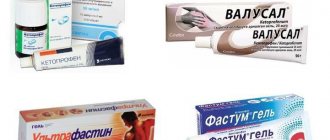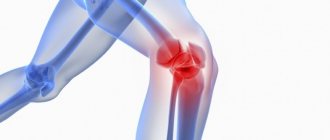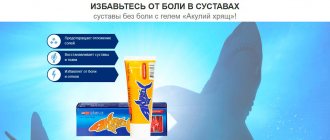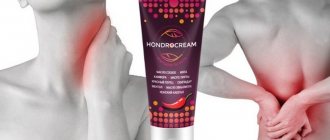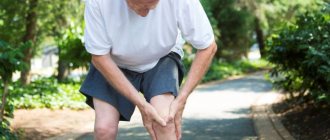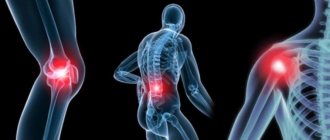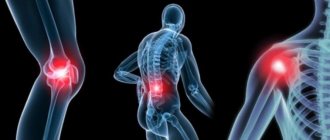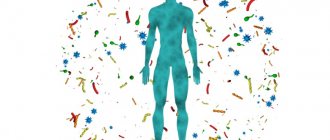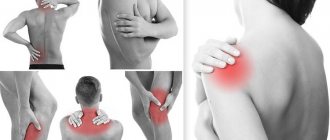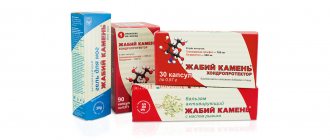Nise gel is a synthetic drug used in the treatment of degenerative-destructive changes in cartilage, joint, and bone tissues. The drug quickly reduces the severity of headaches and toothaches, and effectively alleviates a person’s condition after injury. The active ingredient of the external agent is nimesulide belongs to the group of non-steroidal anti-inflammatory drugs (NSAIDs). This is the world's first selective cyclooxygenase inhibitor exhibiting antipyretic and analgesic activity.
Chemical composition and release form
Indian manufacturer Dr. Reddy's Laboratories Ltd. produces 1% Nise gel in plastic tubes of 20 g and 50 g. The secondary packaging of the drug is a cardboard box with an attached annotation. In the anatomical-therapeutic-chemical (ATC) classification system (ATC) Nise gel is assigned the code M02AA . The average price of a 20 g package is 150 rubles, and a 50 g package is 250 rubles.
For long-term treatment of any pathologies, it is better to purchase a large package of Nise gel. This will help save money and time spent visiting the pharmacy.
Nise gel is characterized by a jelly-like consistency, light yellow color and the absence of foreign particles. The drug has a pleasant floral scent due to the flavor added by the manufacturer (Narcissus-938). In addition to the active ingredient nimesulide, the product for external use contains the following auxiliary components:
- potassium dihydrogen phosphate;
- N-methyl-2-pyrrolidone;
- distilled water;
- carbomer-940;
- propylene glycol;
- macrogol;
- thiomersal;
- isopropanol;
- butylated hydroxyanisole.
Auxiliary ingredients ensure easy absorption of the active substance into the skin and its delivery to bone, joint and cartilage tissues affected by inflammation. The medicine should be stored at room temperature, out of direct sunlight.
pharmachologic effect
The unique combination of active and auxiliary ingredients of Nise gel allows it to be used as a means for complex treatment. Doctors include the drug in therapeutic pathogenetic regimens to prevent further destructive and degenerative destruction of articular and cartilage tissues. And the anti-inflammatory effect of the external agent provides a rapid reduction in symptoms: pain, stiffness of movement, severe swelling.
The synthesis of Nise gel, the main effect of which is aimed at suppressing the activity of cyclooxygenase, made it possible to avoid the occurrence of pronounced side effects from oral administration of PVNP. This drug is completely safe for patients with high blood pressure and those prone to ulceration of the mucous membranes of the gastrointestinal tract.
Pain is the body’s protective reaction to the influence of internal and external negative factors. Two mechanisms are involved in its launch:
- local _ After the development of the inflammatory process, the nerve impulse is transmitted to the central nervous system;
- central _ The brain recognizes pain and produces a response to the occurrence of the received signal.
Pain, as a companion to almost all diseases of the musculoskeletal system, is initiated by various substances that excite nociceptors (tissue, plasma, tachykinins). A course of use of Nise gel allows you to prevent the development of events in such a negative scenario, reduce the severity of discomfort by stopping the inflammatory process.
Pharmacological group
Nise gel belongs to the group of non-steroidal anti-inflammatory drugs that block the release of substances that provoke pain. In the matter of joint pain, it is necessary to control the synthesis of prostaglandin H2. and E2. At the site of inflammation, these substances are produced with great intensity, and impulses from them enter the spinal cord.
Nise gel is able to block the synthesis of these substances. This action has an analgesic effect. In addition, the use of the gel relieves the severity of inflammation.
If the work of the joints is difficult after sleep, Nise gel is used before the development of the inflammatory process. This allows you to start your day pain-free.
When used topically, nimesulide is not absorbed into the blood or is absorbed in extremely low doses. The maximum possible concentration of the substance is achieved only at the end of the first day of use of the product, and its volume is almost 300 times less than after a single oral dose of nimesulide. No derivative metabolites of the substance are detected in the blood.
Pharmacodynamics
The active ingredient of Nise gel belongs to the class of sulfonanilides. The main pharmacological effect of nimesulide is to block the enzyme as a direct participant in the synthesis of prostaglandins from polyunsaturated fatty acids . These biologically active substances transmit nerve impulses from one cell to another and initiate the spread of pain. Increased production of prostaglandins causes the following pathological conditions:
- formation of inflammatory foci;
- formation of edema of varying localization and severity;
- the occurrence of painful sensations.
The active ingredient of Nise gel prevents the production of prostaglandin E2 not only in inflammatory foci, but also in the nociceptor system, which makes innervation in the spinal cord impossible.
One of the main mechanisms of action of the active ingredient of Nise gel is a decrease in the concentration of rapidly converted prostaglandin H2. It is this that prostaglandin isomerase acts on, forming a mediator of pain, swelling and inflammation - prostaglandin E2 - during a complex biochemical reaction.
A gradual decrease in the content of prostaglandins in tissues leads to a decrease in the activity of prostanoid receptors. This condition is characterized by an analgesic and anti-inflammatory effect. An important point of all mechanisms of action of Nise gel is the absence of any effect on the formation of prostaglandins from arachidonic acid. This explains the small list of contraindications and side effects of this external medicine.
Nise gel also exhibits pronounced anti-edematous activity immediately after application to the skin due to the ability to trigger the following mechanisms of action:
- suppression of red blood cell aggregation by reducing the synthesis of endoperoxides and thromboxane A2;
- inhibition of the activation of circulating proenzyme by increasing the content of inhibitor-1;
- preventing the release of the biologically active substance histamine, which provokes tissue swelling and allergic reactions;
- promotes the formation of lymphocytes produced by the immune system to destroy foreign proteins.
One of the undoubted advantages of Nise gel is the rapid reduction of interleukin-6 and urokinase - the main culprits of degenerative changes in cartilage tissue. Nimesulide is involved in the synthesis of elastase and collagenase, which ensure optimal functioning of the human musculoskeletal system.
The active ingredient of Nise gel exhibits powerful antioxidant activity. Nimesulide prevents cell destruction by free radicals and prevents tissue damage from toxic breakdown products of molecular oxygen.
Pharmacokinetics
The active and auxiliary ingredients of Nise gel penetrate into the systemic bloodstream in small quantities. For example, traces of the metabolic product of nimesulide are not detected at all, provided that the patient complies with the recommended single dosages and the duration of the course of treatment. The analgesic effect occurs in approximately 15-30 minutes . With a single use of an external agent in the bloodstream, a maximum therapeutic concentration is created after 24 hours. It is approximately 300 times lower than that determined when taking Nise in tablet form or Nimesulide in granules orally.
During clinical trials, the duration of the analgesic effect in patients was established - from 30 minutes to six hours. A decrease in the severity of pain had a positive effect on a person’s ability to perform everyday routine tasks (movement, dressing, toileting, performing light and heavy work) - in 60% of patients after applying 1 g of the product and in 66% after distributing 2 g on the skin drug.
Benefits and effectiveness of Nise gel
The main advantage of Nise gel is its high efficiency and fast action. Literally 15-20 minutes after applying the gel, a decrease in pain is observed. It is also worth noting that the likelihood of side effects when using Nise gel is extremely low.
Among other advantages it is worth highlighting:
- If you follow the instructions, Nise gel is used very economically.
- The drug can be purchased at almost any pharmacy.
- The cost of the gel is low; the price of a 20 g tube ranges from 200 to 250 rubles.
- In addition to relieving pain, the gel helps reduce the inflammatory process.
- It helps cope well with both acute and chronic pain.
Advertising
Indications for use
Nise gel is included in the therapeutic regimens of patients diagnosed with various diseases of the musculoskeletal system. A topical medication is used to prevent further destruction of bones, cartilage and joints. The drug is used to relieve the inflammatory process and reduce the severity of pain during exacerbation of chronic diseases of the spinal column. In the treatment of injuries and severe bruises, the use of Nise gel is also practiced to eliminate swelling of soft tissues located near the injuries.
The medicine can be used at home to treat large hematomas (bruises). The active ingredient of the drug helps to quickly regenerate damaged small blood vessels, restore microcirculation and reduce the severity of swelling.
Nise gel is used as a pathogenetic and symptomatic treatment for the following pathologies:
- radiculitis;
- gout at the relapse stage;
- rheumatoid arthritis;
- osteochondrosis of any localization (cervical, thoracic, lumbar);
- Bekhterev's disease;
- psoriatic arthritis;
- osteoarthritis;
- osteoarthritis;
- periarthritis;
- tendinitis;
- lumbago;
- sciatica;
- bursitis.
Neurologists recommend that patients rub the drug into the area of inflammation in cases of pinched nerves in the spinal column, intervertebral hernias and neuralgia. Nise gel quickly relieves pain and swelling from sprained ligaments, including the ankle.
Instructions for use
Nise gel is well absorbed by the skin due to its delicate consistency. To improve absorption and prevent the development of bacterial infection, the drug should be applied only to clean skin. There should be no damage to it, not even microtrauma (cracks, wounds, scratches). Maximum diffusion of the main ingredients is ensured by the presence of auxiliary components in the gel base.
When using gel and Nise tablets simultaneously, daily and single dosages can vary significantly. When carrying out complex treatment, the amount of the drug for oral administration is reduced by 2-3 times.
It is necessary to apply the medicine only to those areas of the body where pain is felt. The gel cannot be rubbed in; it should only be spread in a thin layer on the surface of the skin. The annotation states that to ensure an analgesic and anti-inflammatory effect, it is enough to squeeze out a column of the product no more than 3 cm long from the tube. When diagnosing injuries in large areas of the body, the amount of gel can be increased.
The maximum concentration of nimesulide in tissues affected by inflammation is achieved by applying the gel 2-3 times during the day. The duration of the therapeutic course does not exceed 4 weeks. Longer use will cause the accumulation of drug ingredients in tissues, which leads to the development of an allergic reaction such as urticaria. After applying the drug to the skin, you should wash your hands, since when nimesulide gets into the eyes and mucous membranes, a burning sensation occurs.
After 3-4 weeks of treatment, neurologists or surgeons evaluate the effectiveness of Nise gel. If the therapy does not bring results, or they are minimal, the doctor replaces the drug with another drug.
Nise gel (1% 50g)
INSTRUCTIONS for use of the medicinal product for medical use NIZE®
Registration number: P N012824/02
Trade name: Nise®
International nonproprietary name: nimesulide
Chemical name: N-(4-nitro-2-phenoxyphenyl) methanesulfonanilide
Dosage form: gel for external use
Composition: 1 g of gel contains: active substance: nimesulide 10 mg; excipients: N-methyl-2-pyrrolidone 250 mg, propylene glycol 100 mg, macrogol 315.5 mg, isopropanol 100 mg, purified water 200 mg, carbomer-940 20 mg, butylated hydroxyanisole 0.2 mg, thiomersal 0.1 mg, potassium dihydrogen phosphate 0.2 mg, flavor (Narcissus-938) 4 mg.
Description: transparent gel of light yellow or yellow color, free from foreign particles.
Pharmacotherapeutic group: non-steroidal anti-inflammatory drug (NSAID)
ATX code: M01AX17
Pharmacological action Nise® gel is a new generation non-steroidal anti-inflammatory drug (NSAID) from the sulfonamide class. It has a local analgesic and anti-inflammatory effect. Nimesulide is a selective competitive reversible inhibitor of cyclooxygenase type II (endoperoxide-prostaglandin-H2 synthetase). Reduces the concentration of short-lived prostaglandin H2, a substrate for kinin-stimulated synthesis of prostaglandin E2, at the site of inflammation and in the ascending pathways of pain impulses in the spinal cord. A decrease in the concentration of prostaglandin E2 (a mediator of inflammation and pain) reduces the activation of EP type prostanoid receptors, which is manifested by analgesic and anti-inflammatory effects. When applied topically, it causes a weakening or disappearance of pain at the site of application of the gel, including pain in the joints at rest and during movement, reduces morning stiffness and swelling of the joints. Helps increase range of motion.
Pharmacokinetics When applying the gel, the concentration of the active substance in the systemic circulation is extremely low. The maximum concentration after a single application is observed at the end of the first day; its value is more than 300 times lower than that for oral dosage forms of nimesulide. No traces of the main metabolite of nimesulide, 4-hydroxynimesulide, are found in the blood.
Indications Local symptomatic treatment of inflammatory and degenerative diseases of the musculoskeletal system (articular syndrome with exacerbation of gout, rheumatoid arthritis, psoriatic arthritis, ankylosing spondylitis, osteoarthritis, osteochondrosis with radicular syndrome, radiculitis, inflammatory damage to ligaments, tendons, bursitis, sciatica, lumbago). Muscle pain of rheumatic and non-rheumatic origin. Post-traumatic inflammation of soft tissues and the musculoskeletal system (damage and rupture of ligaments, bruises).
Contraindications Hypersensitivity to nimesulide and the components of the drug; erosive and ulcerative lesions of the gastrointestinal tract in the acute stage, bleeding from the gastrointestinal tract, dermatoses, damage to the epidermis and skin infections in the area of application; severe renal (creatinine clearance less than 30 ml/min.) or liver failure, a history of bronchospasm associated with the use of acetylsalicylic acid or other NSAIDs, pregnancy and lactation, children under 7 years of age.
With caution : Liver failure; renal failure; severe heart failure; arterial hypertension; diabetes mellitus type 2; elderly and children's age.
Directions for use and dosage : Externally. Before applying the gel, wash and dry the skin surface. Apply a uniform thin layer of gel approximately 3 cm long to the area of maximum pain, without rubbing, 3-4 times a day. The amount of gel and the frequency of its use (no more than 4 times a day) may vary depending on the size of the treated area and the patient’s response. Do not use the gel for more than 10 days without consulting a doctor.
Side effects Local reactions: itching, urticaria, peeling, transient change in skin color (not requiring discontinuation of the drug). If any adverse reactions occur, you should stop using the drug and consult your doctor. When applying the gel to large areas of the skin or with prolonged use, the development of systemic adverse reactions is possible: heartburn, nausea, vomiting, diarrhea, gastralgia, ulceration of the gastrointestinal mucosa, increased activity of “liver” transaminases; headache, dizziness; fluid retention, hematuria; allergic reactions (anaphylactic shock, skin rash); thrombocytopenia, leukopenia, anemia, agranulocytosis, prolongation of bleeding time.
Overdose Cases of drug overdose have not been described. However, when large quantities of gel (exceeding 50 g) are applied to large areas of skin, the development of an overdose cannot be ruled out. There is no specific antidote. You need to see a doctor.
Interaction with other drugs Pharmacokinetic interaction with drugs that compete for association with blood plasma proteins is not excluded. Caution should be exercised when using Nise® simultaneously with digoxin, phenytoin, lithium preparations, diuretics, cyclosporine, methotrexate, other NSAIDs, antihypertensive and antidiabetic agents. Before using the gel, you should consult your doctor if you are using these products or are under medical supervision.
Special instructions The drug is recommended to be applied only to intact areas of the skin, avoiding contact with open wounds. Avoid getting the gel into the eyes and other mucous membranes. Do not use the gel under airtight dressings. After applying the gel, wash your hands with soap. Close the tube tightly after using the gel.
Release form Gel for external use 1%. 20 g or 50 g in a laminated aluminum tube equipped with a membrane to control the first opening. The tube is packed in a cardboard box with instructions for use.
Shelf life: 2 years. Do not use the drug after the expiration date indicated on the package.
Storage conditions List B. In a dry place, protected from light, at a temperature not exceeding 25 °C. Do not freeze. Keep out of the reach of children!
Conditions for dispensing from pharmacies Without a prescription.
Manufacturer Dr. Reddy's Laboratories Ltd., Hyderabad, Andhra Pradesh, India
Manufacturing address Dr. Reddy's Laboratories Ltd. Plot No. 41, Nasigere Village, Kasaba Hobli, KIADB, Malur-563130, Karnataka, India.
Send consumer complaints to the following address: Representative office: 115035, Moscow, Ovchinnikovskaya embankment, 20, building 1 tel., 783-29-01 fax
Contraindications and side effects
External preparations with nimesulide in any concentration are not prescribed to patients with recurrent gastrointestinal pathologies of any etiology. The ability of the active substance to prolong and increase bleeding excludes from the list of indications for the use of nimesulide people with stomach and duodenal ulcers, and violations of the integrity of the mucous membranes of the digestive organs. Contraindications to Nise gel include the following pathological conditions:
- acute and chronic renal failure;
- hyperthermia during viral or bacterial respiratory and intestinal infections;
- alcoholism;
- drug addict.
The drug is not included in the therapeutic regimens of women during pregnancy and lactation. Nise gel is not intended for the treatment of children under 12 years of age. Relative contraindications include arterial hypotension, non-insulin-dependent diabetes mellitus, acute and chronic heart failure. In the presence of such diseases, the use of external agents is allowed only under constant monitoring of blood composition using laboratory tests.
Side effects after applying Nise gel to the skin usually occur in patients who are intolerant to the active ingredient. Sometimes skin rashes are provoked not by nimesulide, but by the auxiliary components that the manufacturer used as a gel base. Systemic symptoms develop in very rare cases due to minor penetration of chemicals into the bloodstream. What side effects may occur after absorption of the drug into inflammatory foci are described in detail in this table:
| № | Local symptoms | General clinical manifestations |
| 1. | Skin redness | Dyspeptic disorders: nausea, vomiting, excessive gas formation, diarrhea |
| 2. | Development of swelling | Ulceration of the mucous membranes of the gastrointestinal tract |
| 3. | Formation of small rashes | Headaches and dizziness |
| 4. | The appearance of skin itching | Confusion |
| 5. | Prolongation of bleeding duration due to skin damage | Pain in the epigastric region |
| 6. | Formation of large blisters filled with liquid contents | Bronchospasm |
| 7. | — | Anaphylactic shock |
| 8. | — | The appearance of fresh blood or blood clots in the urine |
| 9. | — | Thrombocytopenia |
| 10. | — | Agranulocytosis |
Side effects of Nise gel often occur when medical recommendations are neglected, when the patient applies an excessive amount of external product in the hope of a quick recovery. In any case, if your health worsens, you must stop using the drug and consult a doctor to replace it.
Before using Nise gel, you need to test it. A small amount of the product should be applied to the wrist or elbow. If after 30-40 minutes there is no redness or rash on the skin, then you can begin treatment.
Possible contraindications
Like any other medication, Nise gel has certain contraindications. It is not recommended to use the gel in the following cases:
- Individual intolerance to the components included in the drug.
- Significant damage to the skin at the site of application of the gel.
- Dermatological diseases of an infectious nature.
- Period of pregnancy or breastfeeding.
- Acute stomach ulcer.
- A history of severe stage renal or liver failure.
- The drug is prohibited for use by children under 7 years of age!
Nise gel should be used with extreme caution by elderly people, as well as people with diabetes, hypertension and heart failure.
